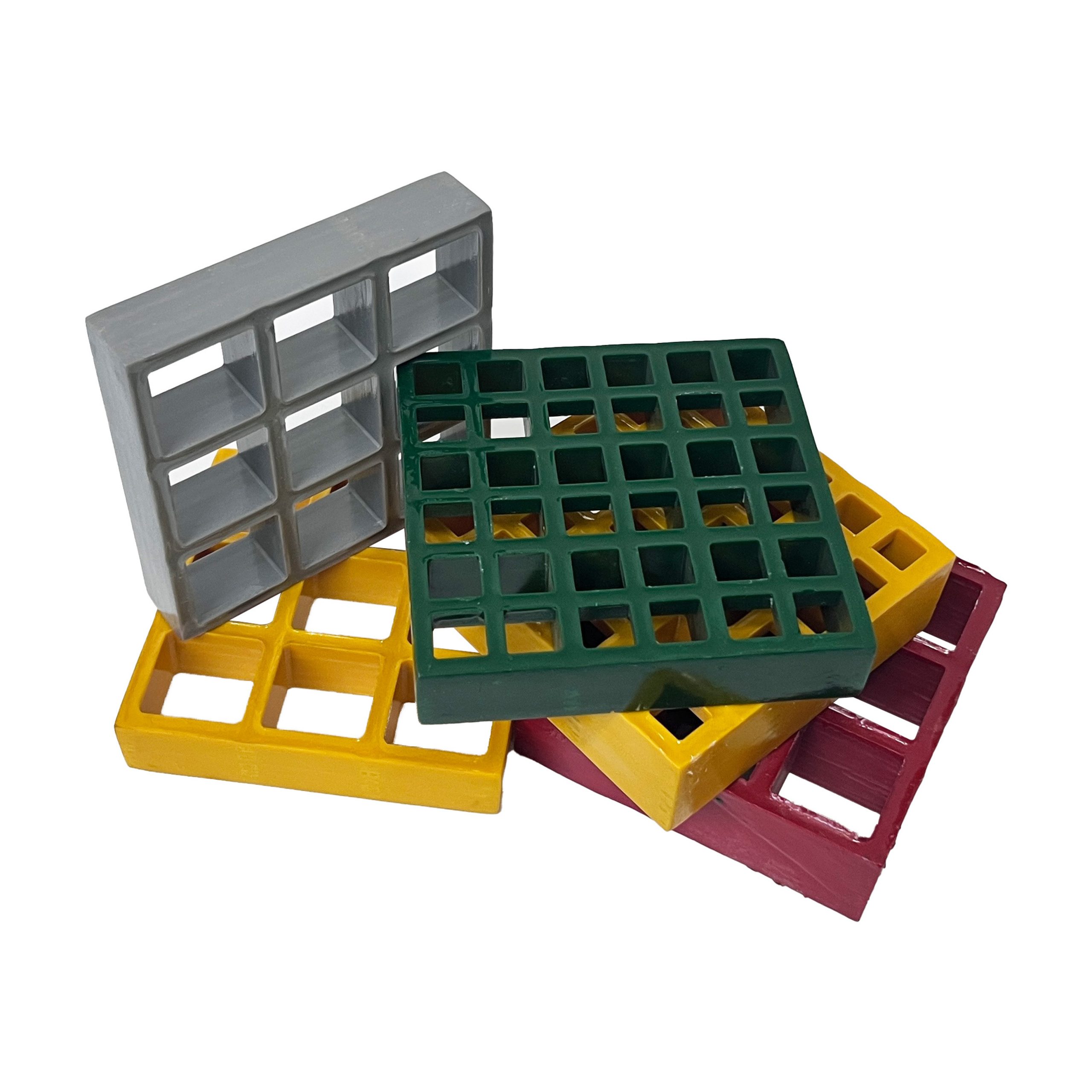What is fiberglass grating used for?
Fiberglass grating is a versatile and innovative material that finds a wide range of applications in various industries due to its unique combination of features and benefits. This article will delve into the world of fiberglass grating, exploring its uses, advantages, and professional insights to provide a comprehensive understanding of this exceptional product.
What is Fiberglass Grating?
Fiberglass grating is a type of structural material made from a combination of glass fibers and resin. The manufacturing process involves weaving or molding glass fibers into a matrix of resin, resulting in a lightweight yet durable product that exhibits excellent strength, corrosion resistance, and versatility. Fiberglass grating is available in a variety of sizes, shapes, and configurations to suit different applications.

Advantages of Fiberglass Grating
Corrosion Resistance
One of the key advantages of fiberglass grating is its exceptional resistance to corrosion. Unlike traditional metal grating materials, fiberglass is impervious to rust and degradation caused by exposure to chemicals, moisture, and harsh environmental conditions. This corrosion resistance makes fiberglass grating ideal for outdoor and industrial applications where durability is essential.
Lightweight Construction
Fiberglass grating is significantly lighter than metal alternatives, making it easier to handle, transport, and install. The lightweight nature of fiberglass grating reduces the need for heavy machinery during installation and simplifies maintenance tasks. Additionally, the reduced weight of fiberglass grating can lead to cost savings in terms of labor and equipment requirements.
Non-Conductive Properties
Another notable advantage of fiberglass grating is its non-conductive properties. Fiberglass is an insulating material that does not conduct electricity, making it a safe choice for applications where electrical conductivity could pose a risk. This feature is particularly important in industries such as electrical utilities, where personnel safety is a top priority.
Slip-Resistant Surface
Fiberglass grating can be engineered with a slip-resistant surface texture, enhancing safety in environments where slip and fall accidents are a concern. The textured surface of fiberglass grating provides traction underfoot, reducing the risk of injuries due to slipping, especially in wet or oily conditions. This feature makes fiberglass grating suitable for walkways, platforms, and other areas where slip resistance is essential.
Applications of Fiberglass Grating
Industrial Settings
Fiberglass grating is widely used in industrial settings for various applications, including floor grating, walkways, platforms, and stair treads. Its corrosion resistance, lightweight construction, and durability make it an ideal choice for environments exposed to chemicals, moisture, and heavy loads. Industries such as chemical processing, oil and gas, and manufacturing often rely on fiberglass grating for its reliability and longevity.
Marine and Offshore Structures
In marine and offshore applications, fiberglass grating is preferred for its resistance to saltwater corrosion and durability in harsh marine environments. It is commonly used in docks, piers, ship decks, offshore platforms, and coastal structures where traditional materials may deteriorate quickly. The lightweight nature of fiberglass grating also contributes to easier installation and maintenance in maritime settings.
Water and Wastewater Treatment
Fiberglass grating is a popular choice in water and wastewater treatment facilities due to its resistance to chemicals, water, and corrosion. It is used in applications such as walkways, platforms, and trench covers within treatment plants, where exposure to harsh substances is common. Fiberglass grating offers longevity and reliability in these critical infrastructure components.
Commercial Buildings
In commercial buildings, fiberglass grating is employed for its versatility and aesthetic appeal. It can be used in interior and exterior settings, providing durable flooring solutions for high-traffic areas, balconies, and outdoor spaces. Fiberglass grating is available in various colors and finishes to complement different architectural styles, making it a popular choice for modern building projects.
Installation and Maintenance Tips
Proper Installation
When installing fiberglass grating, ensure that the support structure is properly designed to accommodate the load requirements of the grating. Follow manufacturer guidelines for spacing, fastening, and securing the grating to prevent bending or movement during use. Proper installation is crucial for the long-term performance and durability of fiberglass grating.
Regular Cleaning and Inspection
To maintain the integrity and appearance of fiberglass grating, perform regular cleaning and inspection to remove debris, dirt, and contaminants. Use mild soap and water for cleaning, avoiding harsh chemicals that could damage the resin matrix. Inspect the grating for any signs of wear, damage, or deterioration, and address any issues promptly to prevent further damage.
Avoid Heavy Impact
Avoid subjecting fiberglass grating to heavy impact or excessive loads beyond its rated capacity. While fiberglass grating is durable and strong, it is essential to use caution when handling heavy equipment or materials on the grating surface. Preventing heavy impacts can help extend the lifespan of the grating and maintain its structural integrity over time.
Regular Maintenance Schedule
Establish a regular maintenance schedule for fiberglass grating to ensure its continued performance and longevity. Inspect the grating periodically for signs of wear, corrosion, or structural damage, and address any issues promptly. By staying proactive with maintenance, you can prolong the lifespan of fiberglass grating and prevent costly repairs or replacements in the future.
Conclusion
Fiberglass grating is a versatile and reliable material that offers a wide range of advantages for various industries and applications. From its corrosion resistance and lightweight construction to its non-conductive properties and slip-resistant surface, fiberglass grating provides a durable and safe solution for flooring and walkway needs. By understanding the uses, advantages, and maintenance tips for fiberglass grating, professionals can make informed decisions when selecting this innovative material for their projects.
